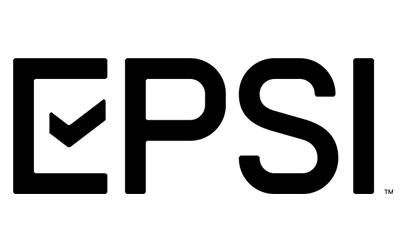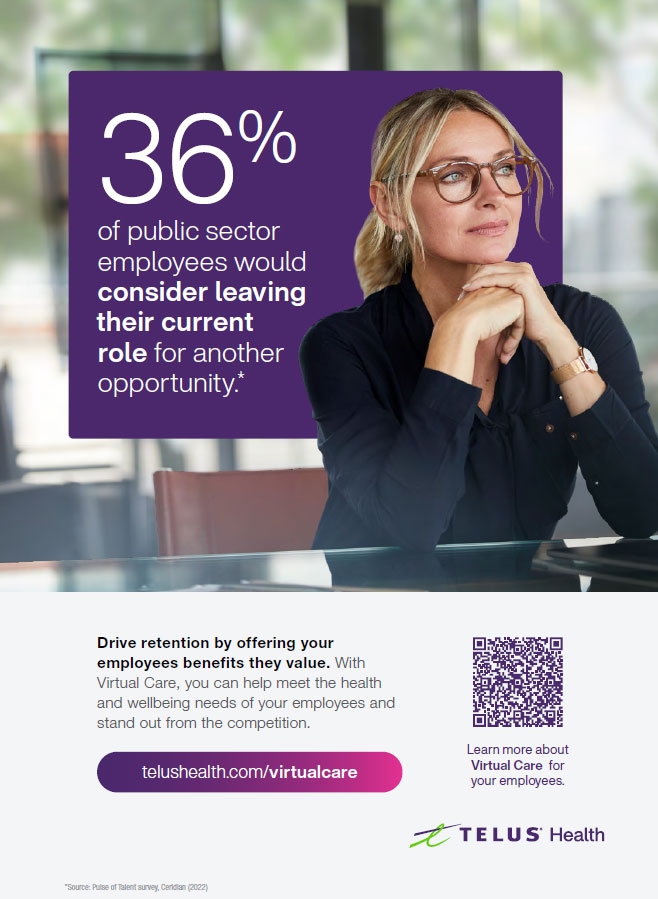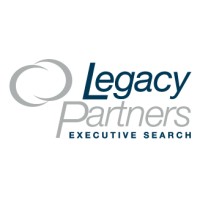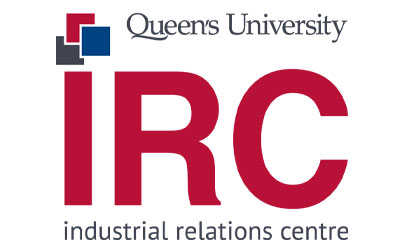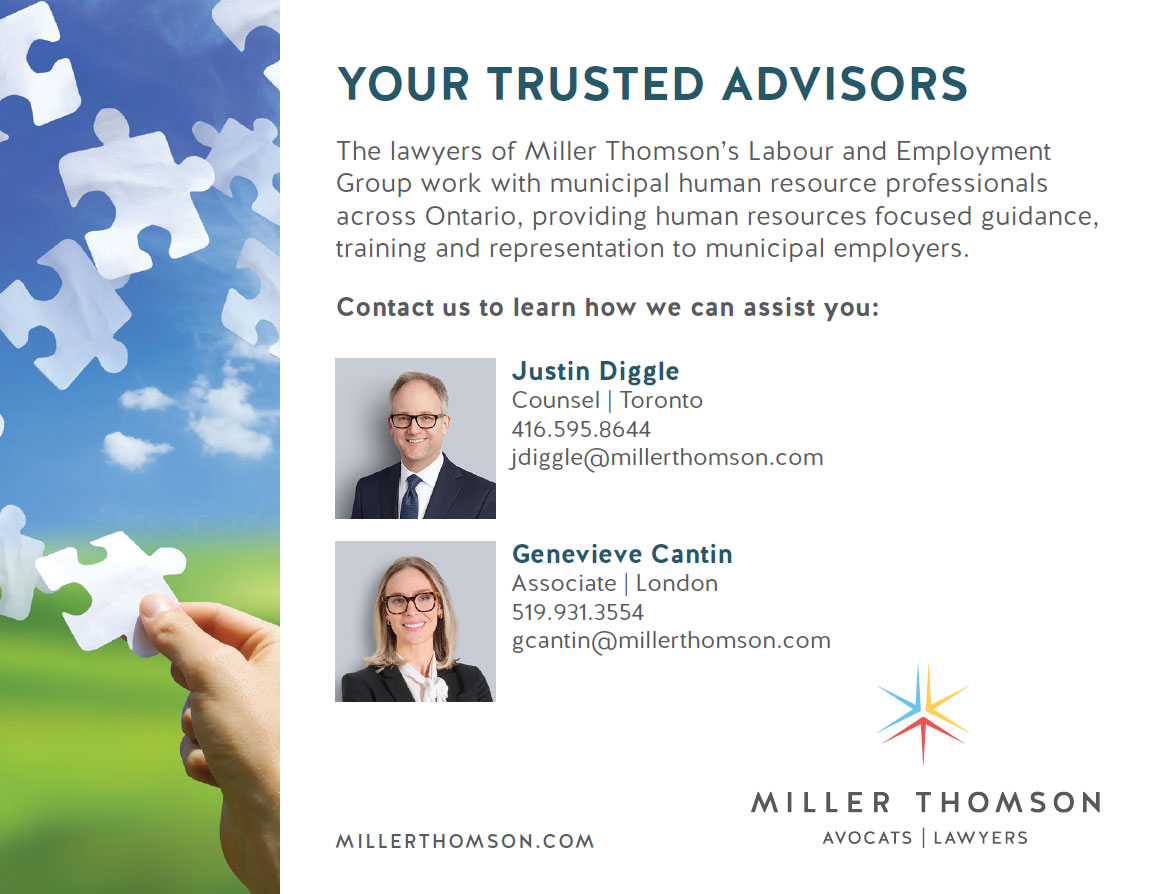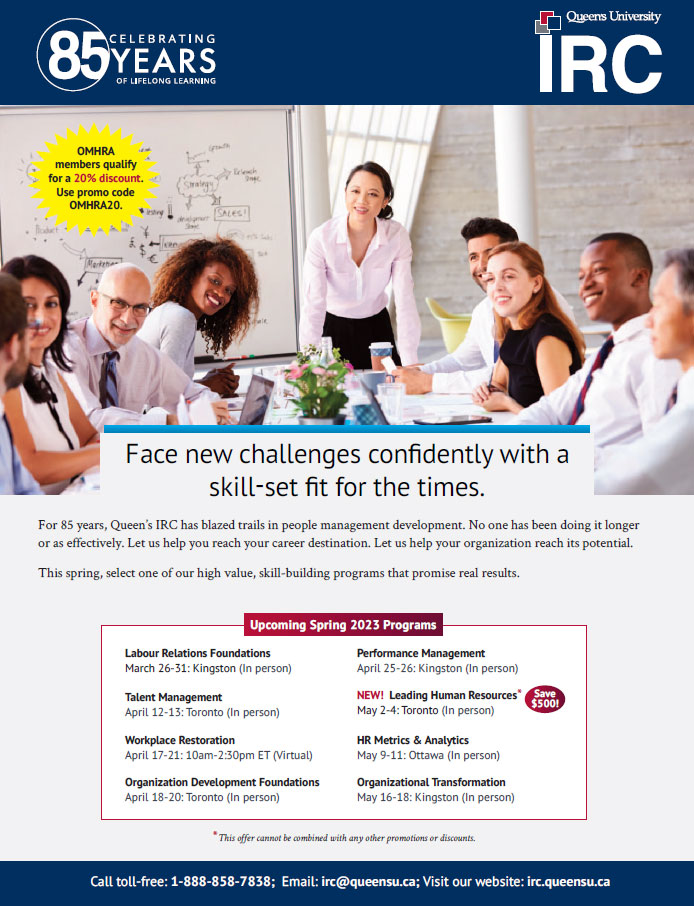
HR Navigator is published the last Friday of each month
 Welcome to the inaugural edition of HR Navigator. Our rebranded and restructured newsletter will be published on the last Friday of each month during 2023 as part of our 60th Anniversary celebrations. You will be able to find it on our website under the “Insights” tab.
Welcome to the inaugural edition of HR Navigator. Our rebranded and restructured newsletter will be published on the last Friday of each month during 2023 as part of our 60th Anniversary celebrations. You will be able to find it on our website under the “Insights” tab.
It’s hard to believe it’s March already. With Spring’s arrival we often shift into a different gear, getting (re)organized, and opening up our doors and windows to let the fresh air in. Of course, this can be applied to both our personal and professional lives.
Our Spring Workshop is always a great place to hear new concepts, to share fresh ideas as well as to revitalize friendships and acquaintances of people we may not have seen for a while.
Our 2023 event has a great theme, The Big Shift: From Personnel Administration to People and Culture Strategy, and an excellent agenda. We will hear from 19 engaging speakers who will focus on psychological safety and emotional wellbeing and mental fitness/resilience and how that intersects with belonging.
Our Keynote speaker, Dr. David Weiss, specializes in innovation consulting, leadership coaching, and HR solutions for the public-sector, social enterprise, and private sector organizations. He will kickstart our conversation on how HR may navigate through these continuing, unprecedented times.
Key topics at the Spring Conference that dovetail into this shift include – but aren’t limited to – managing your employer brand, psychological health and safety, considerations of social media and political commentary, building strong working relationships, the effectiveness of mediation, workplace culture, safety and belonging, and other significant topics of interest during these changing times.
In recognition of our 60th Anniversary, we have a special evening planned on Tuesday at The Table Rock Restaurant which has a spectacular view of the Falls as well as a top-rated Canadian chef, serving up great Canadian dishes. Niagara Falls will be lit purple in celebration of our special milestone – be sure to wear purple too! This is a casual networking event for our members and sponsors that is not to be missed!
There is also ample time for you to meet with our sponsors during the agenda at the Spring Workshop. Please be sure to take the time to visit the Sponsor Showcase and learn more about the services our sponsors offer that can support the needs of your municipality. I can’t express enough how key it is for you to have access to dedicated professionals who service our sector. They are generous in their support of OMHRA which assists us to provide professional development and other tools to you, our members.
Finally, we have launched another initiative this month as part of our 60th Anniversary celebrations: our Virtual Book Club to be facilitated by Mohawk College Enterprise (MCE). Our book club is comprised of three online get-togethers for our members who love to read and would like the opportunity to discuss Human Resources themes and common interests. Thank you to MCE for organizing of this initiative!
On behalf of the OMHRA Board of Directors, we look forward to seeing you in Niagara Falls.

Lori Bolton, President

Leverage Career Assessments to Tap into Emerging Talent
New Canadians are an untapped emerging talent pool that can bring a wealth of skills, expertise, and experience to Canadian businesses. However, it’s important to understand the specific needs of this group to tap into their potential. One way you can do this is by using career management assessments as a tool for understanding what motivates new Canadians and how they can contribute to your organization’s success.
Tap into 1.2 million people in Canada as an untapped source of workers.
According to Employment and Social Development Canada, there are over 1.2 million people in Canada who don’t speak English or French as their first language. This represents 17% of all non-official language speakers in Canada.
The number of non-official language speakers has grown by 82% since 2001, while the total population has increased by only 14%. New Canadians have a wealth of talent and potential that can be harnessed for the wider benefit of Canadian businesses and economies. New Canadians are a valuable source of talent in Canada, and they can help businesses tap into emerging markets.
New Canadians bring with them new perspectives and ideas that can help your company grow. They also have the potential to build bridges between cultures and communities, which can be especially useful if your business is operating in multicultural cities such as Toronto or Vancouver.
If you’re looking for employees who speak multiple languages, new Canadians may be just what you need: almost half of all immigrants speak at least two languages fluently–and this number rises significantly when you consider those who arrived here before they were 12 years old (upwards of 60%!). This means there’s less chance of miscommunication between colleagues when working on projects together–which could mean fewer mistakes made by employees due to language barriers!
To tap into this talent pool, employers must provide resources that can help them navigate the Canadian workplace.
To tap into this talent pool, organizations must identify and meet the specific needs of new Canadians by providing information or other resources that can help them navigate the Canadian workplace and economy. Organizations must also be able to communicate with new Canadians in a language they understand.
New Canadians are an increasingly valuable source of talent and potential for organizations across Canada. By taking steps to support their integration into Canadian workplaces, companies can retain more skilled workers as well as attract new ones from around the world who may not have considered working here before.
Career assessments can help you understand what motivates new Canadians and how they can contribute to your organization’s success. A career assessment is a tool that uses standardized questions to evaluate an individual’s interests, values, skills and personality traits. It also provides insight into their work preferences and potential career paths. By understanding what motivates new Canadians, employers can better tap into emerging talent pools by providing opportunities for them to use those skills in meaningful ways within their organizations.
Career assessments also help employers identify the needs of this growing segment of the workforce – a task that becomes more important as Canada continues to welcome more immigrants every year (in 2016 alone over 300 000 permanent residents were admitted into Canada).
Career assessments help you understand what motivates new Canadians by capturing their personal values and goals. This information can be used in hiring, retention and succession planning efforts as it provides insight into how best to support the professional development of employees from diverse backgrounds.
Leverage Career Assessments to Build Your Own Talent Pools
There is no question that businesses are finding it hard to find talent, but career assessments are becoming a new sourcing strategy to attract talent.
Since career assessments provide insights into a worker’s personality and potential job fit, these assessments are being used by organizations as a resource to provide not only a positive service in their communities, especially emerging talent pools like campus recruitment, emerging leaders, and new Canadians. And, from these talent pools, companies are then using this intelligence to match candidates to jobs that fit them best.
Everyone wins – the candidate gets the free career advice they need to match to career paths that suit them best, and the employer wins by positively showcasing their employer brand and building a strong talent pool to predict a high potential applicant that match to their job openings.
Career assessments tap into what motivates emerging talent pools.
Career assessments can help you understand what motivates these emerging talent pools and how they can contribute to your organization’s success. These assessments provide an accurate assessment that will give insight into you’re your ideal applicants and providing help to those who want to work for a great organization like yours. Sometimes you must give and provide value to your communities so they can return the favour by contributing to the success of your company. There’s a lot of skilled workers out there especially in the emerging talent areas so why not offer career advice to help them find their true potential and improve your diversity in the workplace.
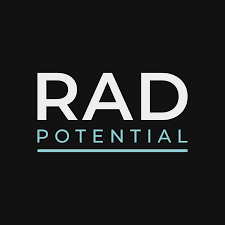

Diversity and inclusion: a way to be more innovative?
According to the CCIL, diversity is relative to the person, the individual. It is the range of dimensions, qualities, and unique characteristics of an individual. Inclusion, on the other hand, would be relative to the community. It would be about creating a culture that promotes equity, and that celebrates, respects accepts and values difference.
Although we often hear about ethnic and cultural diversity, diversity encompasses a broader range than that. It also includes sexual diversity (sex, gender, and orientation), generational diversity (age diversity) and functional diversity (physical and intellectual). Although the concept of diversity of ideas is not part of the definition, a culture of equity should also foster discussion and openness toward others.
Diversity is not a new concept but why has it suddenly become an issue?
Society is evolving and so too are its customs. As HR specialists, we are now increasingly aware of the challenges that people from this diversity face in accessing employment.
The evolving legal, societal, and ethical frameworks require us to address this issue in our practice. The labour shortage has brought a fresh look at the interest in diversity and the need to focus on its inclusion in the labour market. While less visible, neuropsychological diversity has also disrupted staff assessment as students who have experienced multiple accommodations in their learning and assessment enter the workforce.
Why is this important?
Faced with this new reality, it is therefore important for companies to foster this culture of inclusion. By assuming a portion of this responsibility for social integration, organizations can be a source of collective wealth. Public, social, and private organizations can make a difference in the lives of countless individuals, often marginalized by society.
Being inclusive can also mean innovating and performing as an organization. According to a new report on diversity and inclusion from the International Labour Organization (ILO), high levels of equality, diversity, and inclusion go hand in hand with more innovation, productivity, good performance, recruitment, and retention of talented recruits and staff well-being.
While it is cost-effective for an organization to foster a culture of inclusion, the inclusion of this diversity within companies can present several challenges. In some cases, fostering inclusion may require significant adjustments within organizations. It also means a paradigm shift where the difference between equality and equity becomes meaningful.
Successful inclusion requires everyone to put their shoulder to the wheel. Management and employees must all be partners in the accommodation that inclusion sometimes represents. But they are not the only ones. The diversity representative must also be willing to get involved and adapt to make it a success.
How to set it up?
While many organizational barriers exist, there are many solutions to facilitate the integration of diversity. It is also important to understand that all diversities present different challenges to inclusion.
For its part, the ILO report sets out four key principles for achieving substantive, sustainable change in all types of employment: diversity and inclusion must be a priority and an integral part of corporate strategy and culture; there must be diversity at senior levels to foster diversity; managers and staff must lead by example in this regard; and action must be taken at all stages of employment, including recruitment, retention and development.
In concrete terms, possible HR solutions may revolve around revising hiring conditions or job descriptions, granting necessary accommodations in the assessment of qualifications, adjusting workstations, and modulating performance expectations based not only on the position but also on the individual’s ability. There may be the establishment of ratios to allow positive career management for certain groups. It can be as simple as giving people the chance to get their first job or allowing them to work fewer hours per week for a healthy retirement.
All measures must be explored to allow each person from this diversity to be able to fulfil their potential. The important thing to remember is that the organization that chooses to invest in the inclusion of this diversity can only benefit.
In conclusion
As an HR leader, it is therefore important to assess the extent to which your organization can foster inclusion. Based on this assessment, you will find the actions, small or large, that will move your organization towards greater inclusion of diversity. By demonstrating to your leaders that diversity can pay off, you will set the stage for greater productivity and commitment from your resources.

Empowering health inclusivity in the workplace
Diversity, inclusion, equity, and belonging make society—and the workplace—a better place. But investing in diversity alone doesn’t translate to inclusivity, equity, and belonging at work. All four of these pillars are critical for supporting an engaged workplace, and that means not just having a representative team but also making sure everyone feels safe, comfortable, and empowered.
Companies that rate highly in these areas are more creative, profitable, and fulfilling for employees. Naturally, then, diversity and inclusion initiatives have become hallmarks of healthy and well-run organizations.
To include everyone, you have to care for everyone.
Diversity and inclusion conversations are often dominated by professional or cultural considerations, such as curtailing unconscious bias in the recruitment process or allowing employees to choose their statutory holidays. But a crucial part of diversity and inclusion is ensuring team members have access to care aligned to their individual needs, circumstances, and lifestyle.
So it’s not necessarily enough for an employer to provide access to healthcare services and professionals. Instead, true inclusivity means guaranteeing that people can find and work with practitioners skilled in the disciplines that matter most to them—from occupational awareness to mental health—and who have contextual knowledge and sensitivities for delivering services to traditionally marginalized or minoritized groups.
5 ways to encourage healthcare for your company and co-workers.
Whether you’re in a position to make or influence decisions about care services in your workplace, advocating for improved accessibility and equity for your colleagues, or a manager thinking about how to create an inclusive, respectful environment for their team, here are five achievable ways to advance health and wellbeing inclusivity at your organization.
1. Healthcare services need to be flexible as well as responsive.
What’s the opposite of an inclusive approach to healthcare? In short, it’s a one-size-fits-all approach. If you don’t have optionality, you don’t have inclusivity.
These services should also be accessible on an as-needed basis beyond typical workday hours. And they should be available across a range of channels to accommodate different communication preferences, whether by phone, text, video, or in-person.
2. Help create a safe space to talk candidly about mental health.
The last few years haven’t been easy. The pandemic, the Great Resignation, “quiet quitting,” supply chain issues, the cost of living crisis, and international conflicts have made people stressed and anxious.
Meanwhile, many Canadians have demanding careers that compound this pressure—it’s no wonder chronic stress and burnout are increasingly common complaints for today’s employees. Fortunately, employers are increasingly becoming a part of the solution, helping to break down stigmas and offer access to services where employees can receive care.
3. Co-workers may also be caregivers, and they need support.
The world has changed both rapidly and gradually, locally and globally. Today, more and more people are working on a full-time or part-time basis from home. And a combination of factors, such as high housing and rental prices and an aging population, means that multigenerational households are a new norm for many Canadians.
Parents need flexibility in their schedules to care for their children, and health benefits that extend to their dependents. The same holds true for those who are looking after elders. And it’s important to remember that issues such as caregiver burnout and compassion fatigue are real and challenging, as is the stress of navigating complex care systems and resources for both the young and old.
If you’re a team leader, remember what to be mindful of as your team members may have different priorities and schedules.
4. Accommodate alternative work styles and schedules.
Many organizations now encourage a remote or hybrid workforce and let employees work flexibly. If people are no longer bound to a traditional nine-to-five workday, why should their healthcare be? Having 24/7 access to healthcare—for instance, by providing virtual care options—is a huge benefit, but team leaders also need to embrace flexible working schedules so people can attend appointments during the work day if necessary.
5. People need support in their lives beyond typical healthcare.
A healthy lifestyle is a balanced lifestyle, so it makes sense that healthcare benefits and services shouldn’t stop at medical treatment. Instead, it’s ideal to have additional offerings to support broader aspects of health. Offering an ecosystem of resources through your company’s benefits plan, for example, can give employees autonomy and choice when it comes to pursuing wellbeing.
There are multiple digital platforms that can help employees track their progress, too, and they can be great for turning wellbeing goals into friendly competition.
Workplace inclusivity is inseparable from healthcare inclusivity.
Inclusivity is all about creating a safe work environment where employees feel free to be their true selves. And people can only be their best when they feel their best and know they’re supported no matter where they are in their personal health journeys.
To learn more about how virtual care can help to break down the barriers to healthcare and promote workplace inclusivity, visit TELUS Health Virtual Care.
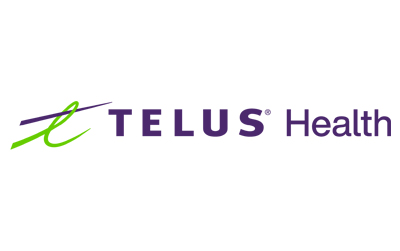

Is Now The Time To Make A Diversity Leadership Hire?
Diversity, Equity and Inclusion is not a new concept when it comes to building out a strong leadership team to support your Township, County, City or Region. Historically, the most challenging part about implementing an effective DEI hiring strategy for Municipal Governments in Canada has been the very limited talent pool to recruit from. But with the candidate market cooling off and recent elections shaking things up at the C-level – that diversity talent pool has grown significantly. Today, Municipalities have more opportunities to attract and hire a diverse candidate – but how do you recruit your first Diversity hire ever at the leadership level?
Create An Inclusive Recruitment Process.
A lot of Municipalities find themselves in uncertain territory today. They know the value in diversity, and know there is qualified diversity talent available – but they don’t know how to embark upon this type of search. As a search consultant – I will confidently say a diversity search is a much more methodical search process that should be led by an expert in this area. Several years ago I saw this shift, that Municipalities would eventually be ready to make an intentional commitment to DEI, and completed and received my DEI Certification through Cornell University in New York. My certification and training in DEI challenged me to transform my own perspective of the way I typically approach a search. For a diversity search specifically, the recruitment process must be inclusive from the start including:
- Proactively expanding my network at all times to include more diverse thought leaders.
- Creating more equitable access to candidates beyond my immediate networks and my clients’ reach
- Intentionally using selective language for not only the job description but in my verbal and written communications with candidates
- Leading client conversations with more transparency and openness as this is uncharted territory for many of them for hiring diversity talent
- Always allowing for cultural fit and community representation to drive the search instead of artificial quotas or diversity mandates
- Challenging my own clients as to why they believe they need to hire a diversity candidate.
As traditional organizational structures begin to change, I am seeing more Municipalities open to and moving toward diversity representation at the leadership level. But the key for any diversity hire is to always place fit and representation at the core of your search and the candidate.
Diversity Should Represent Your Community and The People It Serves.
I always tell Municipalities and Broader Public Sector organizations that a diversity candidate should be representative of the larger community which they serve, including having the right core competencies and skills. Sometimes the benchmark diversity candidate that a search committee thinks they need, does not always align with the skills and core competencies demanded by the role itself. This is when I advise Towns, Counties and Municipalities that the best fit diversity candidate is a well-rounded individual that is qualified and represents the larger community. While diversity is essential to innovation, once you find and hire a leader from a diverse group – your onboarding process will need to be much different as well.
Creating An Inclusive Culture To Drive Performance
Part of my DEI certification, focused upon the aftermath of the recruitment process which is onboarding. An impactful onboarding process is critical to setting any new leader up for success – however onboarding a diverse leader requires a much more intentional approach. The lack of diversity at the leadership level for decades has inadvertently generated a homogenous workforce and culture. The result is a workforce that looks, thinks and acts the same way. Part of the recruitment process for hiring a diversity candidate is taking onboarding, training, awareness and inclusion to the next level. Any new candidate will face challenges stepping into a CAO role regardless of their race, gender, ethnicity or sexual orientation. So when it comes to hiring a diversity candidate this can add a whole new layer of disruption across the team. Create inclusive training programs that allow for the existing leadership team to adapt and proactively consider new perspectives that diverse leadership may introduce. By elevating cultural sensitivities and awareness at the senior leadership level and creating a more inclusive culture, the executive team will better collaborate, negate unconscious bias and drive performance. This cultural reform will then trickle down to the wider teams and produce better results.
The Changing Face of Leadership And A Track Record Of Success
The last several Chief Administrative Officers (CAO), Commissioner and Director searches we have done have resulted in the appointment of equity seeking candidates. For many of these Municipalities and public sector organizations, these candidates are the first ever diversity hires at a CAO or Commissioner level role. Some of these searches include and are not limited to the CAO searches at the Town of Cobourg, Loyalist Township, CEO search at the Peterborough and Kawarthas Chamber of Commerce or Commissioner, Finance/ Treasurer search at the Town of Whitby.
In the last 2-3 years, at least 10 of our completed searches have resulted in a diversity hire. We’ve been leading the diversity and inclusion movement across the Municipal Government and broader public sector space for a number of years and have developed a reputation as the experts in diversity placements across Canada. This is simply a result of our inclusive process and approach to search.

4 Steps to Achieve Sustainable DEI Transformation
Janet Stewart, Queen’s IRC Facilitator, 2022
In recent years, organizations have turned their human resource energies to enhancing workforce diversity, fostering inclusive workplace cultures and addressing systemic barriers to employment equity. These efforts are simply the right thing to do, and they also reflect leaders’ growing appreciation that diversity, equity and inclusion (DEI) efforts enhance organizational success. From being able to attract and retain talent, to being more able to innovate and problem-solve, the benefits are plentiful.
Despite these benefits, organizational efforts are not always effective in achieving long-term sustained impact. This work is highly complex and nuanced and, as such, requires careful planning and organizational-wide understanding and commitment. While success requires leadership champions and workplace-wide roll-out, long-term transformative change in this area requires powerful conversations and buy-in across all levels and corners of the organization.
What this means is that at its core, enhancing DEI is about transforming organizational norms, structures and culture. And as with all significant organizational change, without careful attention to how DEI strategies are approached and implemented, the culture change will not be sustained.
Emerging research is identifying some of the success factors that support successful workplace DEI implementation strategies. A 2020 report from McKinsey reveals that those organizations whose DEI efforts have achieved measurable and sustained change share common elements. Specifically, these organizations:
- Approach DEI efforts in an organizational-led manner with strong leadership commitment
- Articulate clearly how DEI initiatives support organizational goals
- Possess a strong culture of accountability
- Deploy bold initiatives related to inclusion
How do you turn these aspirational elements into concrete actions your organization can take now to enhance its DEI initiatives? This article proposes four practical and foundational steps to begin your workplace DEI planning. Together with the aspirational elements listed above, they propose a path forward that will maximize the likelihood of transformational and impactful DEI changes in your workplace.
Step 1. Know where you’re starting from
The first and most important step in an organizational DEI plan is to clearly understand your current workplace culture. No two DEI strategies are the same. As such, it is impossible to approach this work in a formulaic manner. Your DEI strategy needs to be crafted to address your unique organizational challenges. Knowing your “starting place” requires assessing your current workplace culture through organizational data, surveys and focus groups to identify gaps and areas requiring attention.
To frame your workplace assessment, you may want to consider following three distinct areas of inquiry:
- Diversity: How diverse is your current workforce? Do you notice varied perspectives, strengths, identities and backgrounds across departments? Are certain identities over-represented at particular levels of the organization?
- Equity: What systemic barriers – policies, norms, practices – are impeding equity of opportunity for particular segments of your workforce? How might they be addressed?
- Inclusion: What does it feel like to work in your organization? How inclusive is the workplace culture and do all employees feel they belong?
Once you have explored these questions and identified emerging themes, you will be in a place to have meaningful conversations about setting your goals for change and determining how to achieve those goals.
Step 2. Establish accountability structures
Doing this work is complex and takes time. To ensure success, it is essential to demonstrate an organization-wide commitment, starting from the top down. Your leaders need to show that they understand the importance of DEI and are working for change in this area.
Having a clear structure of governance is a proven way to ensure accountability. Consider the following questions when creating a governance structure for your organization’s DEI initiatives:
- What structure will be most effective to ensure all voices are contributing?
- Who will ultimately be responsible for the work?
- How often will you meet?
- How will you ensure representative and diverse voices are included?
Step 3. Develop a DEI vision statement
A strong DEI vision statement is an articulation of your organization’s ultimate reasons for engaging in this work and what you want to achieve. Creating a statement serves a number of purposes, including:
- Demonstrating the organization’s commitment to fostering an inclusive workplace culture
- Establishing a common vocabulary across the organization to facilitate employee engagement and understanding
- Helping employees understand how their own job duties connect to the organization’s overall DEI efforts
- Enhancing the organization’s employment value proposition
Your vision statement sets the tone and direction for the initiative and should resonate with and engage all employee groups, guiding the work that they do every day to enhance DEI. Creating a strong vision statement is not an easy task; check out Ongig’s article Top 10 Diversity Statements for some helpful tips and examples of statements that stand out.
Step 4. Develop a project plan and measure success
Once you have undertaken the first three steps, you will be well-positioned to develop a project plan and roadmap to help you reach your goals. Best practices in this area include:
- Creating a project plan with clear and realistic timelines and measurable goals
- Involving employees at all levels of the planning
- Identifying ways to engage with staff and to increase understanding and appreciation
- Designing staff and leadership training on related DEI topics
McKinsey’s identification of the importance of having a strong culture of accountability is relevant here. Your project plan should be ambitious in its attempts to address the gaps you’ve identified in your organization. Similarly, a culture of accountability is one that takes the time to measure and report on progress. This, too, should be built into your plan.
Conclusion
Like all large and complex endeavours, the benefits accrue when you set a vision for where you want to be and then put in place the structures needed to support your work to get there. In the case of enhancing DEI in the workplace, these structures include a team of diverse individuals and a clear and actionable plan to achieve measurable change.
Remember that this paradigm-shifting work takes time and commitment. Investing in these first steps will ensure you have a strong foundation upon which to build more specific strategies.
To summarize, you need to:
- Know where you are starting from
- Commit to the work by setting up an accountability structure
- Develop a DEI vision statement
- Develop a project plan that includes clear goals that address the identified gaps and measure your success
If you follow this overall planning framework, your organization will be on the right path to achieve its DEI vision and see sustainable, transformative change.
- Dixon-Fyle, S., Dolan, K., Hunt, V., & Prince, S. (2020, May 19). Diversity wins: How inclusion matters. McKinsey & Company. Retrieved March 11, 2022, from https://www.mckinsey.com/featured-insights/diversity-and-inclusion/diversity-wins-how-inclusion-matters
- Barbour , H. (2020, September 17). Top 10 diversity mission statements. Ongig Blog. Retrieved March 11, 2022, from https://blog.ongig.com/diversity-and-inclusion/diversity-mission-statement/

Developing an Effective Ethics Reporting Program
An ethics reporting program can be a key resource to support a more inclusive and safer workplace. It is a confidential channel for employees to voice concerns without fear of reprisal. An employee can expose any kind of information or activity that is considered not appropriate within an organization. This can include violation of company policy/code of conduct, unethical behaviour, workplace harassment, breach of law or regulations, safety concerns, threat to public interest, fraud including time theft, or corruption.
When developing an ethics reporting procedure there are several factors to consider while creating a strong, effective program.
Like most initiatives, the program is most effective when supported by the organization’s leadership. When your company has cohesive code of conduct and ethics policies, staunchly adhered to by management, individuals will be more willing and more likely to report suspicious activities.
Along with this, it is vital to acknowledge the fact that the modern workplace is incredibly diverse, containing a rich mix of backgrounds, cultures, languages, and life experiences. A successful ethics reporting program must cater to this diversity with as many languages as appropriate, and allow for multiple and easy channels for reporting, such as hotlines, online forms, or an appointed coworker.
Most importantly, for the program to be effective, employees must understand how the program works, why it is important, and how they will be supported if they come forward with information. This includes providing solid examples of what behaviour is expected of employees and what exactly warrants reporting. The full spectrum of actions that warrant reporting (AKA whistleblowing) is broad and goes beyond financial misconduct such as fraud/misappropriation. Employees need to know your organization’s stance on issues such harassment, sexual harassment, theft including time theft, substance abuse, workplace violence and bullying, as well as how this conduct harms the company and employees, and the importance of reporting any suspected improprieties.
Support for the reporting person is arguably the most important aspect of an ethics reporting program. If employees know they are supported, this can greatly increase the number of individuals willing to report wrongdoings. Employers also must realize that the reporting person may face numerous risks—both real and perceived—including feeling ostracized, losing friends, or even fear of damaging their career. Having said that, anonymity is the foundation of employee empowerment and support.
Employees should be fully advised on all reporting mechanisms available to file their concerns. Possible communication methods may include telephone hotlines, in-person reporting, online forms, and dedicated email addresses or fax numbers, and should be accessible 24-hours a day, 365 days a year. Management can decide to employ an internal or external hotline, using either in-house or third-party providers. This may include the costs of training, operations, and technology. An external independent third-party provider is always preferable simply because the employee may be reporting to the very person the internal program reports into. Further, the real or perceived perception that management may ‘look after their own’ is alleviated with an independent third party.
Equally important, all reports made should be recorded and retained, with file security that is tightly restricted and stringent. Even individuals who identify themselves often value the potential for anonymity and security. An openly communicated and fully enforced anti-retaliation policy also provides a sense of security to employees who fear the repercussions of reporting. Anti-retaliation clauses explicitly state that there will be no reprisal for individuals who use the ethics reporting program, and they clearly define what this looks like.
Lastly, always consult with legal counsel before finalizing any ethics reporting policy or program. This peace of mind for both you and your employees make for a strong sense of security and support. Employee tips are the most common method of detecting occupational fraud (over 60 percent of frauds are uncovered this way). A well-designed program protects both you and your employees.
Nicole Weir, Manager, Client Services
Xpera HR Services Inc.
nicole.weir@xpera.ca
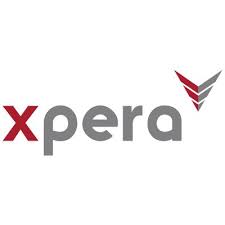

Microaggressions in the workplace – Do you know what to do?
There are few organizations today that don’t ascribe to the values of diversity, equity and inclusion (DEI). Moving from legislative compliance to action, however, can be challenging. Many organizations focus on diversity, which is about representation but increasing representation does not in and of itself drive inclusion. Inclusion requires deliberate action.
Research from Catalyst shows that employees feel included when they are valued for their unique attributes and contributions and have a sense of belonging. Conversely, employees feel excluded when their uniqueness is ignored or dismissed and when they are made to feel like outsiders based on aspects of their identity (or role) within an organization. The cost of exclusion is high for both employer and employee – lower sense of well-being, lower job satisfaction, and reduced work effort, to name a few.
While inclusion is something we feel and is not always visible, exclusion can be heard or observed. Common exclusionary events experienced in the workplace are tokenism, bias and stereotyping. Bias and stereotyping frequently manifest in what Columbia University professor Dr. Derald Wing Sue has described as microaggressions – “everyday slights, insults, put-downs, invalidations and offensive behaviours that people of marginalized groups experience in daily interactions with generally well-intentioned people who may be unaware of their impact.”
Even if the person committing the microaggression did not intend harm, this is irrelevant to the recipient who feels the sting of the impact. And while each individual action may seem small, the cumulative effect of these actions has been described as “death by a thousand cuts.” Speak to a member of any marginalized community and they will tell you about the number of times they experience microaggressions on a given day.
Consider these examples:
- Is that your real hair? Can I touch it?
- You’re so articulate
- Does your husband make you wear a hijab?
- I don’t think “they” should be used as a singular pronoun
- You don’t look gay
- I’m going to call you “fill in the blank” because I can’t say your name
The term microaggression itself has recently come into question. Micro, which means small, can imply triviality and does not take into account the cumulative impact of multiple slights. Aggression can be misleading as it implies intentionality, which is most often not present. Increasingly DEI experts are using the term “subtle acts of exclusion” which puts the focus on the impact of the action, not the intention. Regardless of what we call them, these actions, which are clearly painful for the recipient, are difficult to address in the workplace because they can be subtle, ambiguous and sometimes even disguised as compliments. The burden of addressing them should not fall solely on members of marginalized communities.
Takeaways
As leaders, allies and colleagues, each of us has a role to play in creating an inclusive workplace. We must educate ourselves about the day to day experience of members of marginalized communities. Membership in one marginalized community does not mean we understand the experiences of others.
What can individuals and organizations do?
As colleagues, if you witness a micro-aggression:
DO:
- Consider responding in the moment, particularly if you are in a leadership role – you don’t want your silence to imply approval
- Be direct
- Challenge assumptions
- Separate intent from impact
- Ask questions: What did you mean by that, can you please repeat what you just said, what makes you say that?
DON’T:
- Accuse them of racism, sexism, homophobia or other forms of discrimination – this results in defensiveness and shuts down opportunities for growth and learning
If someone comes to you to express concern about having been on the receiving end of a microaggression:
DO:
- Listen
- Ask what they would like to do about the situation and help determine how best to respond (ensuring agency always rests with the subject of the microaggression)
DON’T:
- Tell them they are being over-sensitive or that they should take a joke
- Tell them that the person committing the act did not intend to cause harm
- Assume they should do what you would do in the same situation
As an organization:
Provide training on bias and microaggressions, as well a formal process for addressing them.
- Derald Wing Sue, “Microaggressions: Death by a Thousand Cuts“, online: (2021) Scientific American
- Getting Along – How to work with anyone (even difficult people) by Amy Gallo, Harvard Business Review Press, 2022
Laleh Moshiri is the Director of Diversity, Equity and Inclusion (DEI) at Hicks Morley.
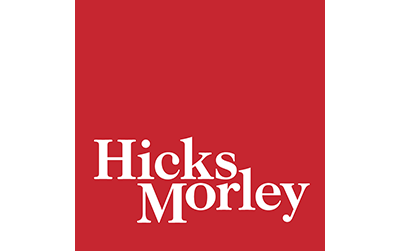
60 Years of Oscar
Best Picture Winners
Mark off the ones you’ve seen.

How to Avoid Missteps when Implementing EDI Initiatives
Equity, diversity, and inclusion (“EDI”) have become a major focus in workplaces across Canada, and particularly the public sector, in recent years. EDI is a broad term encompassing all types of steps and initiatives that employers can take to remove systemic barriers.
One of the most visible ways EDI initiatives have made their way into the workplace is through raising awareness and supporting specific groups and causes. Workplace advocacy, such as messages in email signatures, dress codes, and press releases, can balance the field for historically disadvantaged groups by improving the representation of their interests.
Many employers are also now prioritizing EDI-related events and professional development opportunities. The increased focus on raising awareness and education about historically overlooked issues is a positive step that employers can take to address workplace discrimination and systemic barriers.
While EDI initiatives are almost always implemented with good intentions, botched attempts to implement such initiatives can have negative and embarrassing consequences. To avoid potential missteps in implementing effective EDI projects, employers should consider the following:
- The difference between inviting participation and exploiting membership: If an EDI initiative aims to address issues of a particular community, the employer should not assume that an individual will wish to participate or lead the initiative merely because they are a member of that community. For example, it may be inappropriate to ask your only openly gay employee to organize an event in support of the LGBTQ2S+ community for Pride month.
- Voluntary vs. mandatory participation: Some EDI-related training may form part of an employer’s handbook and/or routine training, in which case it will generally be treated as compulsory. Other EDI-related events may not be directly tied to a person’s employment or may be more social in nature. Employers should carefully reflect on when they make EDI-related activities mandatory for employees as compulsory activities can, in some cases, create negative pushback from those who would otherwise have chosen not to participate.
- Research is crucial: Prior to implementing any EDI initiatives, employers should conduct thorough research to ensure that they understand the intricacies of relevant issues. For instance, prior to inviting a speaker to provide training or a presentation on a specific topic, employers should gather information about the speaker’s experience and expertise in that topic.
- Ideas should be workshopped prior to their implementation: Having several individuals with diverse backgrounds, knowledge, and experience can help strengthen an organization’s decision-making in every domain. This is especially true when deciding how an EDI initiative should be implemented. By discussing an initiative with a broad range of stakeholders prior to the initiative’s implementation, employers can catch potential issues before they occur.
- Even good intentions can lead to bad results: Prior to implementing an untested EDI initiative, thought should be given to the organization’s goal, how they seek to achieve it, and whether there are factors of concern to consider before roll-out. The best intentions can sometimes lead to the worst results if they are not properly planned. For instance, certain activities may not be appropriate mediums for learning about particular issues.
Don’t let stumbles stop progress!
EDI-related topics can be difficult to address, which is why organizations have historically been slow to take action. No matter how carefully an EDI initiative may be planned, people may be dissatisfied about some aspect of it.
However, given the importance of EDI goals, employers cannot let the fear of a misstep prevent them from acting on EDI-related issues. Instead, Employers should be receptive to input with respect to EDI initiatives and work to improve their implementation going forward.
Darren Avery
Lawyer at Filion Wakely Thorup Angeletti LLP


Burning for Change: Exploring Barriers to EDI in the Fire Service
According to the 2021 Canadian census 5.7% of firefighters in Canada were women. While that’s an increase from the 4.4% reported in 2016, it demonstrates the ongoing challenge in increasing gender diversity in the fire service.
In urban centres, such as Toronto, there has been some limited success in achieving diversity. For example, in its 2019 annual report , the Toronto Fire Service reported that 37% of its operations recruits in the previous 4 years were members of a designated group. Designated groups were defined as women, racialized individuals, Indigenous persons, persons with disabilities and members of the LGBTQS+ community. While this shows progress, it means that even in a city where these groups account for the majority of the population, they still make up only around one-third of recent fire recruits.
Many municipalities have been making genuine and concerted efforts to increase diversity, but the barriers to change remain. This brief article highlights a few of those barriers and solutions to overcome them.
Cost
Becoming a firefighter can be prohibitively expensive. To be considered for a position, candidates are often required or encouraged to incur significant costs, some of which are recurring. The total cost can be upwards of $20,000 factoring in fees such as:
- Pre-firefighter training of $15,000
- Application and screening fees of as much as $600 per application
- CPR and standard first aid renewal of $300 per year
- Fitness assessment, as much as $1,000 per year
- Additional courses and qualifications which can be $1,200 each
We have heard anecdotally about consultants who, for a fee, advise candidates when to apply, what to include in their application, and how to answer interview questions. Because these services can also be costly and are often accessed through word-of-mouth, they do not benefit all candidates equally.
These costs can create a significant financial barrier to candidates from marginalized communities.
Perceived likelihood of success
A candidate’s willingness to incur the costs associated with applying may also be related to their perceived sense of the likelihood of success.
Studies suggest that women tend not to apply for jobs unless they possess 100% of the qualifications while men are willing apply if they have only 60%. Women also often report not wanting to “put themselves out there” if they are just going to be rejected.
Potential applicants from other underrepresented groups may also be unwilling or unable to invest in the application process without assurance that they will be hired, especially when they perceive themselves as being disadvantaged due to systemic discrimination.
Cultural barriers
Many municipalities report difficulties recruiting candidates from cultural backgrounds for which firefighting may be considered a low status occupation. Much of the evidence on this is anecdotal and more research needs to be done to better understand the nature and extent of this issue to identify strategies to overcome it.
Inclusion
It’s not just recruitment that creates a barrier to diversity in the fire service. There is also a persistent challenge with discrimination and inclusion even after becoming firefighters.
A 2020 study of women firefighters in Canada shows that women continue to face discrimination and hostile working conditions. And when they report discrimination and harassment, they are often ignored or subjected to reprisals.
In our work with fire services across the country we have heard similar stories. We also often hear of resentment from current members who believe that “reverse discrimination” is preventing white men from getting hired and promoted.
All of this creates a toxic climate that further inhibits diversity.
Solutions
Although the challenges persist, there are ways to overcome them.
For example, a U.S. study identified strategies to positively change the perception of women firefighters’ abilities and decrease opposition to women in the fire service. The change was accomplished through a novel debiasing technique that showcases how both traits traditionally considered “masculine” or “feminine” are equally important for firefighting.
Other strategies include:
- Reducing the cost and procedural barriers in the application process. While online screening tools may help municipalities deal with a large volume of applications, the benefits may be lost if they create undue barriers through costly application fees.
- Ensuring that recruitment advertising reflects diversity since people are more likely to apply for a job for which they see themselves represented.
- Having ongoing dialogue within your fire service to overcome resentment and fears of “reverse discrimination”; and
- Ongoing and consistent efforts to increase inclusivity and eliminate discrimination and harassment.
It’s not an easy fix but since the issues are systemic, so too must be the solution.
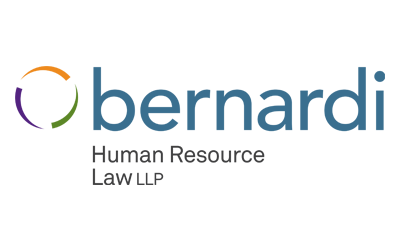
OMHRA Member Spotlight
Trina McGarvey
Director, Human Resources, County of Lennox & Addington
OMHRA Member since 2020
 What are three adjectives your colleagues would use to describe you?
What are three adjectives your colleagues would use to describe you?
I asked and here’s what they said –intelligent, understanding and energetic
If you had to state your three rules of engagement, what would they be?
- Meet people where they are
- Be, do, have
- Take the high road always, less risk of flooding
Did you have an important early influencer in your life? Could you reflect on their role in shaping you and perhaps preparing you to be a resilient leader?
I had a supervisor I knew would always have my back, and it allowed me to take risks that I didn’t have the courage to take before. It really paid off – we did some great things and made mistakes too ;). I have never forgotten how he made me feel. I work hard to show up as he did for me.
What advice do you have for people just beginning their careers in human Resource Management?
- Be kind
- Be safe
- Be you
What may surprise your colleagues about you?
Those closest to me know that I am at my best when I have many balls in the air – if I get bored, it’s not good!
Do you have a hobby or non-work-related activity that you think enhances your effectiveness at work?
Whether it’s a nature hike or going to the gym, physical activity has been a key strategy for me to maintain good mental health and my effectiveness at work. If I don’t do anything for two days, I notice.
What is your favourite quote?
Today is a great day for a great day!
What is your favourite work of fiction?
Still Alice – Lisa Genova
What book on human resource management should every practitioner read?
Fierce Conversations – Achieving Success at Work & in Life One Conversation at a time – Susan Scott
Table of Contents
- 1
- 2
- 3
- 4
- 5
- 6
- 7
- 8
- 9
- 10
- 11
- 12

